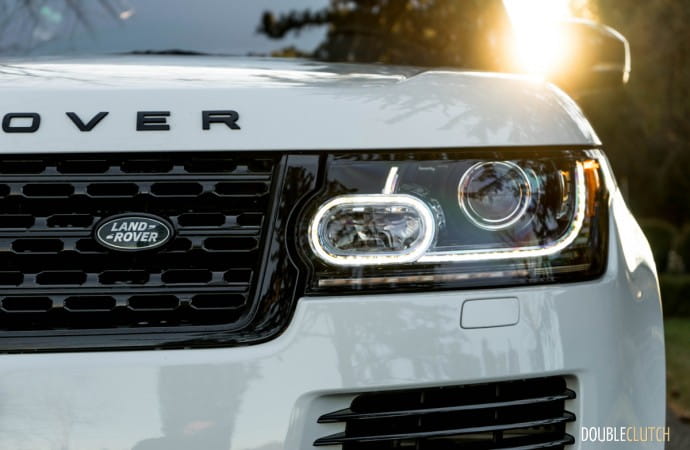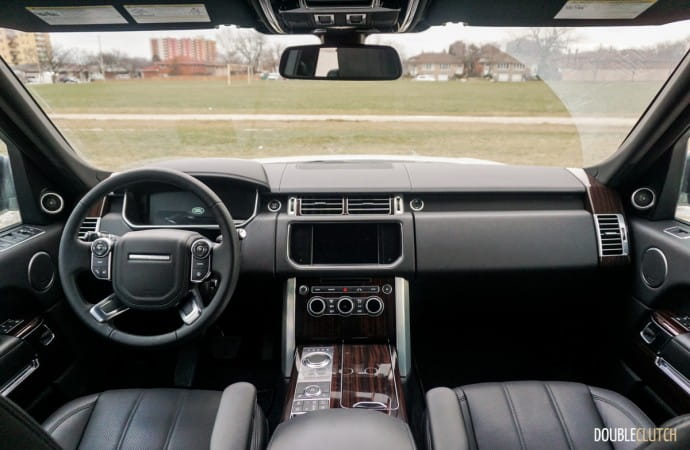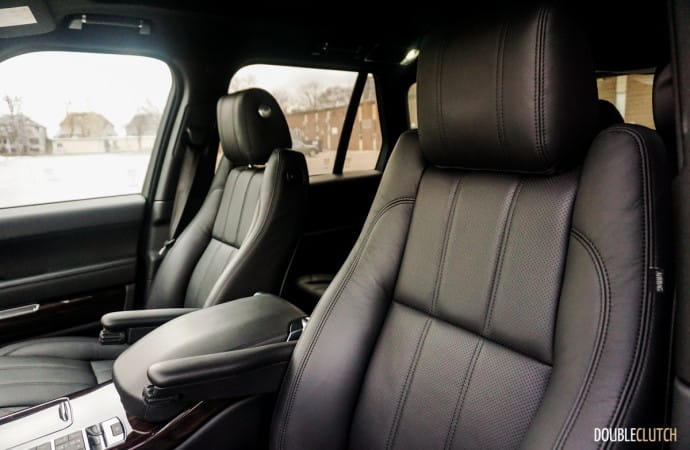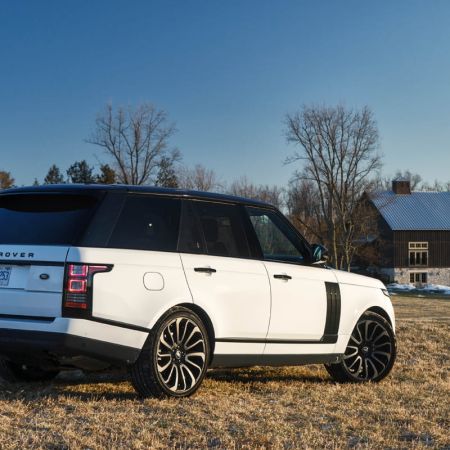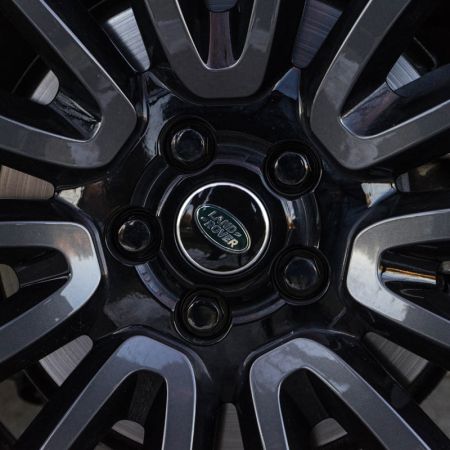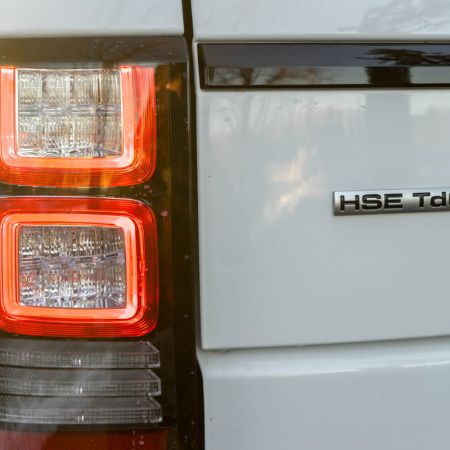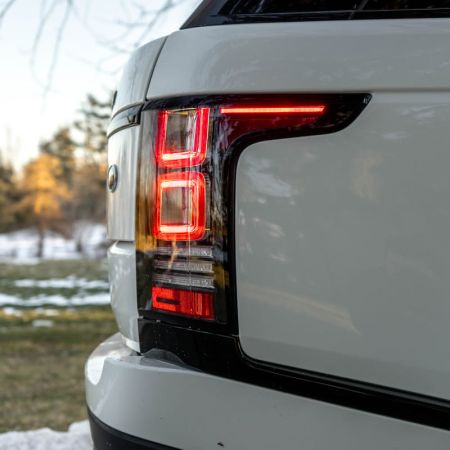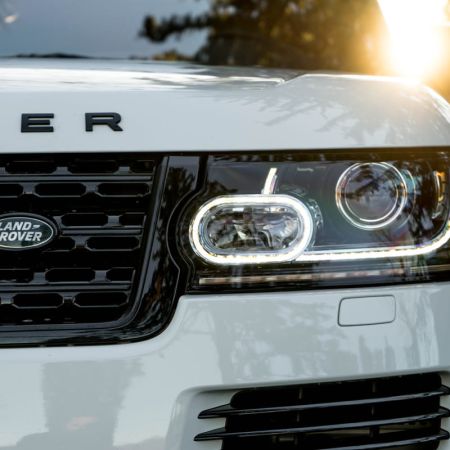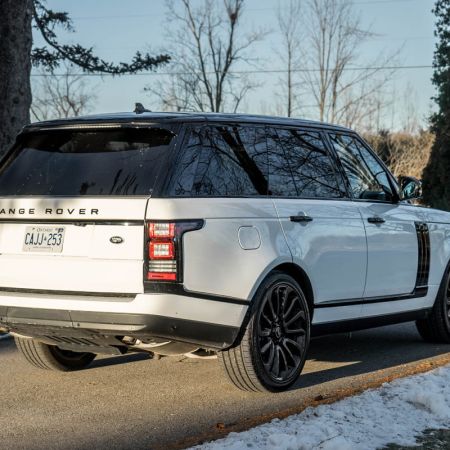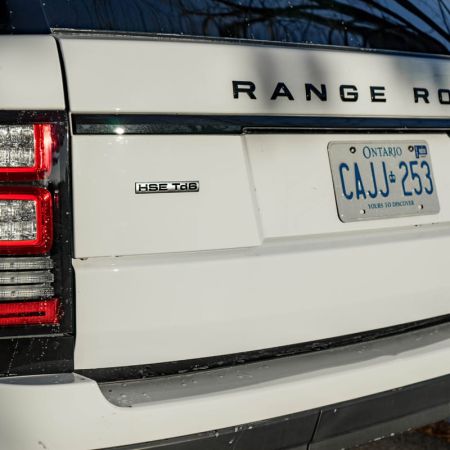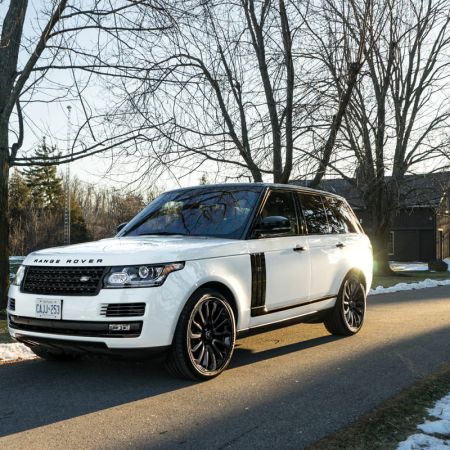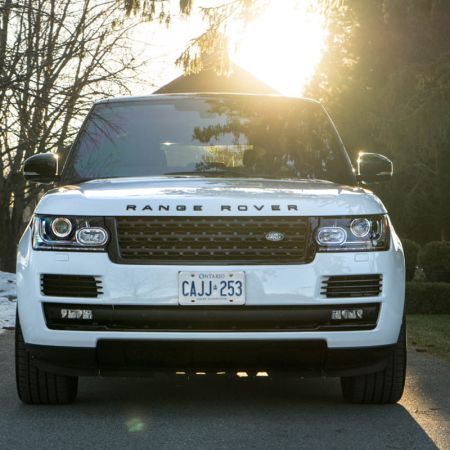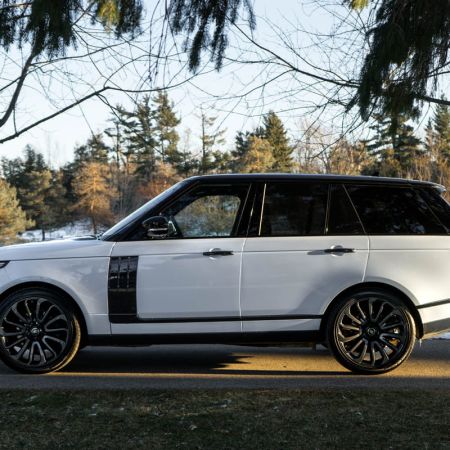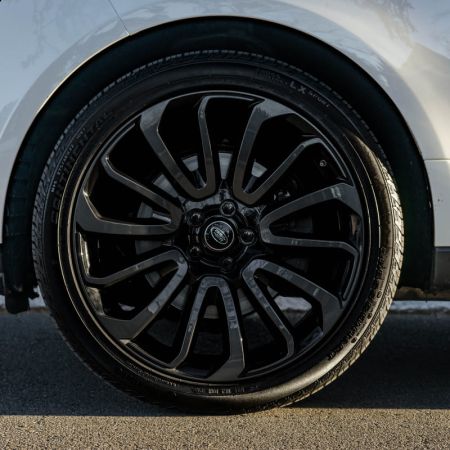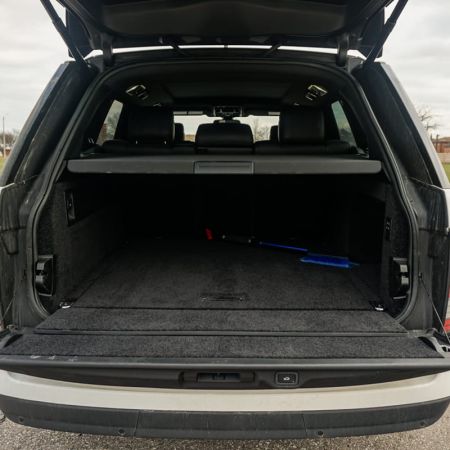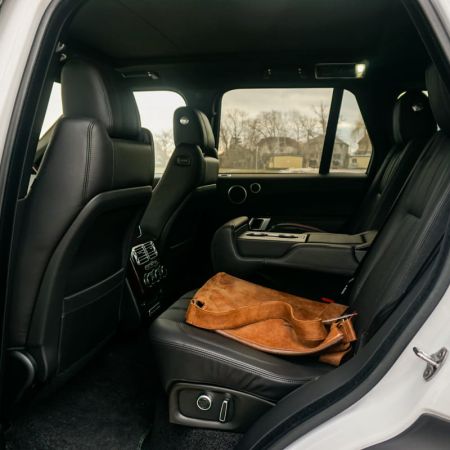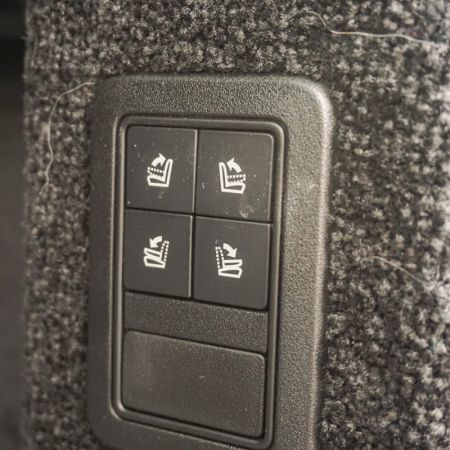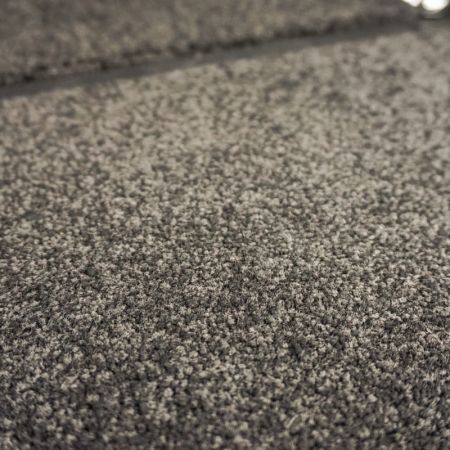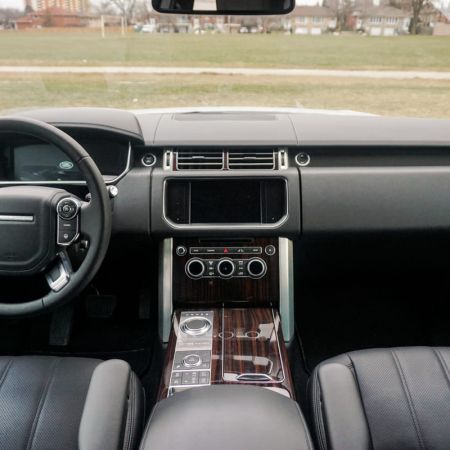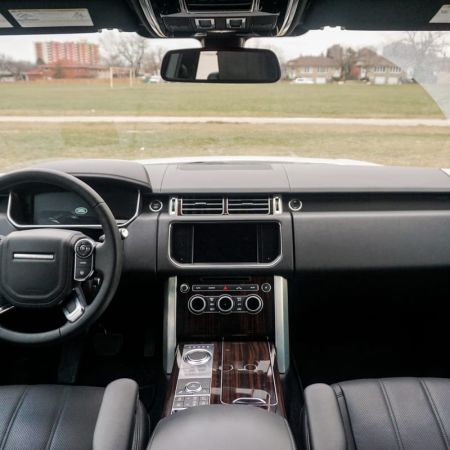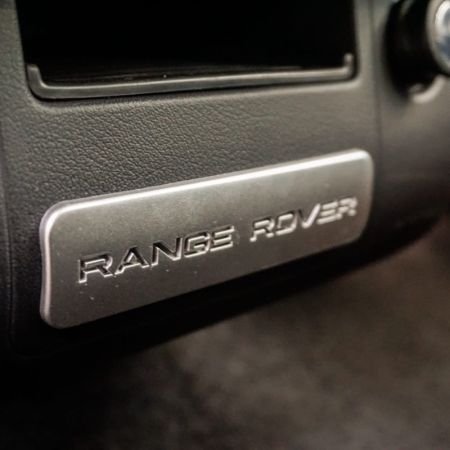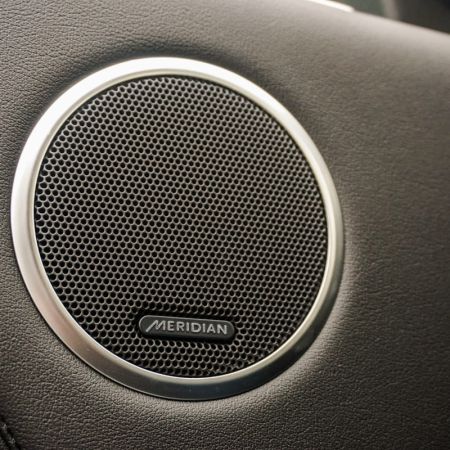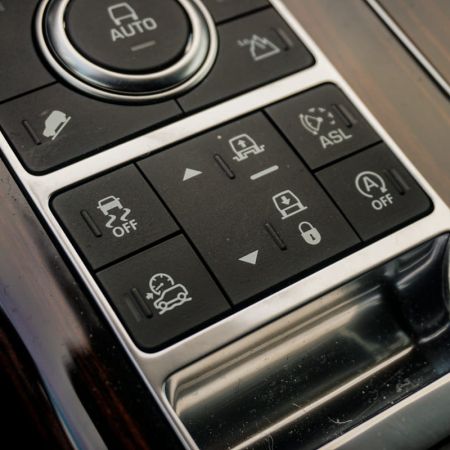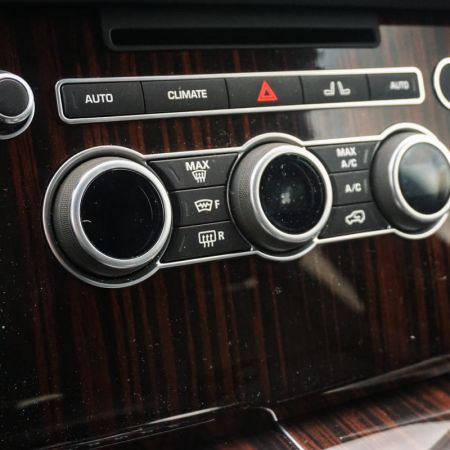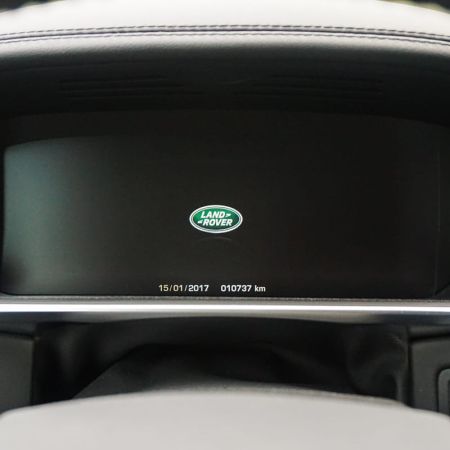I can’t even begin to count the number of pop culture references to the Range Rover brand. This is a vehicle that has established itself as one of the first stops on the dealership list when one has officially obtained success in life. A British nameplate with a reputation of robust, elegant off-road ready vehicles, the Range Rover has been around since 1970. This current generation, codenamed L405, debuted in 2012 as a 2013 model year vehicle. We’ve gotten plenty of seat time behind the wheel of the supercharged V8 model, but this is the one to have. We opted to pilot this 2017 Land Rover Range Rover HSE Td6 Luxury for our trip down to Detroit for the North American International Auto Show.
As you may assume, the Detroit show is one of the most important on the auto show circuit, with many global debuts and tons of editorial deadlines. We needed to get down there safely, regardless of weather conditions. Some of the biggest concerns when taking a trip this important are comfort, fuel efficiency, and winter capability. What better vehicle to choose than the (supposed) most capable sport-utility-vehicle available?
Adding to the comfort-oriented nature of what I like to call our perfect road trip truck is the Td6 powertrain, the first application of a turbodiesel in a Range Rover for the North American market. Pushing this big British Stormtrooper around is a 3.0L V6 turbodiesel, manufactured by Ford for Land Rover. It puts out 254 horsepower, which may not sound like a lot, but there’s 443 lb-ft of torque, available at just 1,750RPM. Land Rover says this Td6-euquipped Range Rover will hit 100 km/h in 7.9 seconds. Storming down the highway fully loaded with luggage, and with four full-sized adults on board, the Range Rover never felt underpowered.
Low-end grunt is adequate too, though the Td6 doesn’t fly off the line with a roar like the supercharged 5.0L gasoline motor does. It accelerates with confidence and aggression, but it’s just not as urgent as the V8. Diesel clatter is minimal, too – only those who are relatively auto-savvy will notice that it’s not a conventional gasoline motor powering this Range Rover. The throttle is responsive, and power delivery has a smooth torque curve with minimal turbocharger lag. Ride quality is pillow-like, as well, thanks to the four-corner adjustable air suspension. Road imperfections be damned, because you won’t feel them.
Naturally, halfway through our four-hour voyage, we hit a snowstorm that caused a full whiteout. There was either a car or a tractor-trailer jackknifed or in the ditch every few kilometers, and that’s not even an exaggeration. Shod in all-terrain tires (not dedicated winters), our Range Rover handled it all amicably without the slightest hiccup. It kept us safe, comfortable, and warm, motivating us to press further through the conditions. The engine rumbled along quietly, and the Terrain Response 2 technology optimized all of the Range Rover’s systems to ensure maximum stability and confidence at all times.
The soft, cushy suspension means there is a bit too much body roll at times, but the air setup does a good job trying to neutralize that to the best of its ability. The all-aluminum body (new for the L405 body style) helps save weight, but with a curb weight of 5,600lb, the Range Rover is still pretty heavy. For a vehicle with such mass to lug around, it actually handles amicably. The on-center steering feel is remarkably good, with actual feel when handling and great driving dynamics overall. The smaller Range Rover Sport (reviewed here) is a bit sharper and confident, but this one is by no means poor.
Fuel mileage is the main reason to opt for the Td6 over the 5.0L, and this one frugally sipped diesel fuel the entire way to Detroit and back. Rated for 10.5L/100km city and 8.0L/100km highway, we averaged 8.0L/100km round trip, all highway. For the duration of our test period outside of the road trip, the Range Rover still sat at an extremely conservative 8.6L/100km. A test of a similarly equipped vehicle in the warmer months returned 8.5L/100km combined. The massive tank will hold 85L of diesel, and will allow the Range Rover to travel considerable distances before needing fuel. There is also the requirement for diesel exhaust fluid (DEF) to be topped up on occasion.
Minimalism is at its finest on the inside of the Range Rover. While the exterior doesn’t look like a massive departure from previous generations, using the traditional two-box design. Our specific vehicle was equipped with the Black Pack, which blacks out the grille, body accents, roof, wheels, and side mirrors for a stealth look. I’m typically not a fan of this look, but it works here, giving the Range Rover the Stormtrooper nickname for the duration of our test. The LED headlights and daytime running lights are classy to look at, and the rear end is set off perfectly by the split tailgate.
On the inside, the simplicity carries through, with no fuss and easy to decipher controls. Unlike the Porsche Cayenne (reviewed here), nothing looks crowded and everything is clearly marked. The 2017 model gets the new InControl Touch Pro infotainment system, which is a welcomed addition to the truck. The 10.2” touchscreen is an upgrade from the outgoing 8” unit, and there are a series of new features that can be accessed and played with using the digital instrument cluster. New connectivity includes access to the new Land Rover Route Planner mobile app, capable of syncing with the vehicle’s navigation system. Unfortunately, Apple CarPlay and Android Auto are still missing.
It’s not about the tech in the Range Rover though; this is a vehicle meant to drive you around like royalty. Ride quality is perfect, but what complete the effect are the massive Oxford leather seats that feel like they are sculpted around your body. The front seats are heated, ventilated, and offer a pleasant massage feature. The rears are power adjustable and heated. These thrones are a great place to watch endless miles fade away beneath you, and bask in the comfort of your bank vault on wheels. We have tested a few products from Rolls-Royce this year (reviewed here), and I will say that save for the new Bentley Bentayga, the full-size Range Rover is the SUV that most captures the spirit of those ultra-luxury vehicles.
Canadian pricing for the big-body Range Rover starts at $111,500 for the regular wheelbase and $123,500 for the long wheelbase model. Our short wheelbase HSE in Fuji White added $650 for the blacked out roof, which I think is a must-have option to complete the look. Factor in the 825W Meridian surround sound system, the heads-up display, Vision Assist Package, Park Assist, Climate Comfort Package, adaptive cruise control, soft-close doors, and the as-tested sticker on our car was hovering around $130,000.
In previous years, the only thing that was holding the Range Rover back in my eyes was the lack of modern technology, but that’s part of the appeal. Though not conservative in nature and despite its popularity amongst the younger aspiring market, the Range Rover is the definition of elegance with near-endless abilities for customization. Plus, the 2017 model gets enough of a technology update (including a WiFi hotspot) to bring it up to par with most of the competition. It still lacks a little bit in that department, but the overall comfort and serenity level is second to none, more than compensating for any shortcomings.
It’s the small things that complete the Range Rover. For instance, the door frames go all the way down and wrap against the bottom of the body, covering the sills. This means you won’t get your pants dirty climbing in, which came particularly useful for us when getting in and out of the car wearing suits. Those on a budget may want to shop elsewhere, because the options and customization on a Range Rover can get pricey fairly quickly. Otherwise, the 2017 Land Rover Range Rover HSE Td6 is one of the best SUVs money can buy, and is sure to tick off all of the right boxes for many buyers.
2017 Land Rover Range Rover HSE Td6 Gallery
See Also:
2016 Land Rover Range Rover Sport SVR

